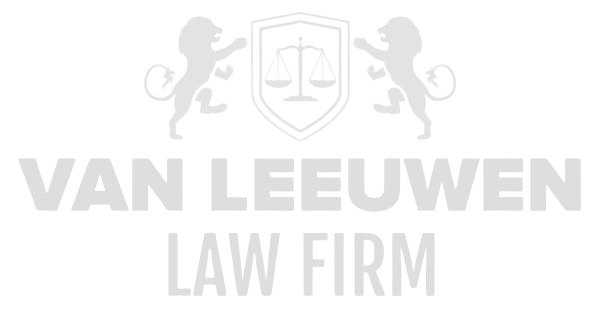The General Data Protection Regulation (GDPR) introduces a set of fundamental principles that govern the responsible processing of personal data. These core principles form the backbone of the GDPR and must be rigorously adhered to by every organization, regardless of size or sector. Ensuring compliance requires not only legal knowledge but also technical and organizational adjustments: from designing secure IT architectures and implementing consent management systems to maintaining comprehensive processing records and training employees in privacy awareness. In an era of big data, artificial intelligence, and cross-border data flows, the GDPR underscores the need to view personal data not merely as a business asset but as fundamental human rights requiring careful safeguarding.
Higher management bodies and regulators frequently observe how shortcomings in safeguarding these principles lead to significant operational and reputational risks. Accusations of financial mismanagement or fraud are often accompanied by insufficient privacy measures, as a culture of poor compliance quickly permeates all layers of the organization. Strict sanctions of up to 20 million euros or 4% of global annual turnover emphasize that only an integral, principled approach—from the boardroom to the helpdesk—can provide effective protection for both the individuals involved and the organization itself.
Lawfulness, Fairness, and Transparency
Personal data may only be processed based on an explicit, appropriate legal ground and must be transparently communicated to the individuals involved. Transparency requires clear privacy statements and real-time notifications about changes in processing purposes or rights. Operationally, this necessitates that all front-office systems—from customer portals to chatbots—are connected to a central consent dashboard that automatically provides information about processing criteria and opt-out mechanisms. Legally, grounds such as consent, contract performance, or legitimate interest must be assessed per activity, documented in registers, and periodically reassessed.
Fairness means that personal data should not be disproportionately sensitive relative to the context of the processing; sensitive categories require additional safeguards. Technical measures, such as dynamic access controls and advanced pseudonymization, should be embedded in workflows. At the same time, communication outputs—such as email campaigns and user interfaces—must adhere to clear language guidelines to prevent individuals from being deterred by jargon or overloaded privacy statements.
Purpose Limitation
Collected personal data may only be used for explicitly defined purposes and should not be further processed for purposes that are incompatible with these. This requires that the purpose be clearly established in metadata fields at the time of initial data collection. Data governance platforms should automatically perform checks that flag any processing deviations when a dataset is accessed outside the defined scope. Organizationally, process owners must delineate responsibilities to ensure that functional teams do not initiate secondary analysis paths without a renewed Data Protection Impact Assessment (DPIA).
Explicit purpose documentation should be linked to each data flow diagram, ensuring traceability through source-transform-load connections. In strategic reporting on product development, new features must be checked for purpose consistency before code is pushed to production. Governance committees should periodically verify whether product roadmaps align with original purposes, and adjust as necessary.
Data Minimization
Adequate governance means that only the personal data necessary for the intended purposes is collected. This implies that design teams must define minimization criteria in advance—for example, collecting only the birthdate rather than full birth information—and that data engineers must implement these requirements in database schemas and API designs. Operationally, this requires ETL processes to automatically split and delete or anonymize unnecessary fields, with monitoring scripts measuring continuous compliance.
Periodic triage of existing datasets is necessary to identify and remove redundant or outdated data. Key performance indicators, such as the percentage of deleted records and the reduction in collected fields, should be included in the data governance dashboard. Audits must confirm that minimization agreements are being followed in practice and that analyses are conducted solely on the necessary attributes.
Accuracy
Personal data should be correct, complete, and up to date, requiring continuous validation against reliable source systems. Integration with external validation services—such as municipal registers or recognized data providers—can help implement changes to address or name data directly. Operationally, workflows should include notification triggers that alert data stewards when discrepancies or expiration dates occur, enabling manual verification.
Moreover, feedback mechanisms must exist to allow individuals to easily report changes, for instance via secure self-service portals. These changes should be processed automatically in all relevant systems through a layered approval workflow, including review by compliance and IT security teams. The full change history must be archived for audit purposes.
Storage Limitation
Retention policies should store data only as long as strictly necessary for the original purpose, with automatic triggers for archiving or deletion after specified periods. Operational retention engines in data platforms should be linked to metadata management, ensuring that data is automatically placed into the correct lifecycle stage: active, archived, or destroyed. Security measures for archiving—such as write-once, read-many (WORM) storage—ensure that archived data cannot be inadvertently altered.
At the same time, legal retention obligations, such as billing or compliance reporting, should be mapped to specific data categories and timelines. Workflow automation must generate monitoring alerts when legal exceptions override standard deletion procedures. Decision rights for exceptions should be vested in governance committees, with every deviation documented in the processing activity register.
Integrity and Confidentiality
Security measures range from certified encryption for data-at-rest and data-in-transit to strong two-factor authentication and advanced key management systems. Operationally, intrusion detection and security orchestration, automation, and response (SOAR) systems should immediately isolate anomalies, while logging and monitoring pipelines provide real-time visibility into suspicious activities. Periodic penetration tests and third-party assurance reports (SOC 2, ISO 27001) should be part of a continuous improvement process.
Organizational controls, including strict segregation of duties, regular security awareness training, and formal incident response playbooks, complement technical measures. Risk management efforts must address both new threats—such as quantum computing threats to encryption—and legacy vulnerabilities. Governance overviews should correlate technical risk scores with business impact, allowing executives to make informed decisions about cybersecurity investments.
Accountability
The data controller is responsible for ensuring compliance and must demonstrate “accountability” through documentation systems that centrally store processing activities, DPIAs, consent records, and audit findings. Operationally, it is necessary to establish compliance automation that continuously generates reports on compliance statuses, with real-time dashboards for senior management.
Additionally, periodic internal and external audits are required, combined with tabletop exercises for incident scenarios. Any deviation, non-conformance, or data breach must be reported incidentally and logged in governance logs, so that during inspections by regulators, it can be convincingly demonstrated that all privacy principles have been consistently applied and tested.









